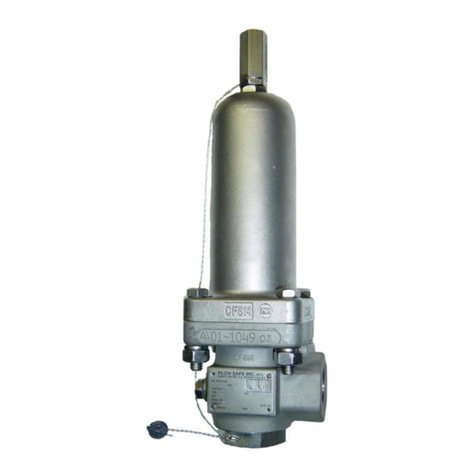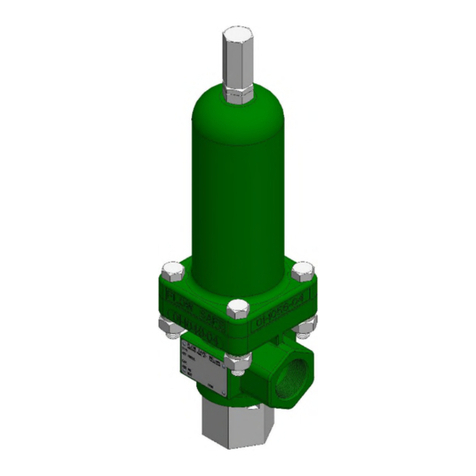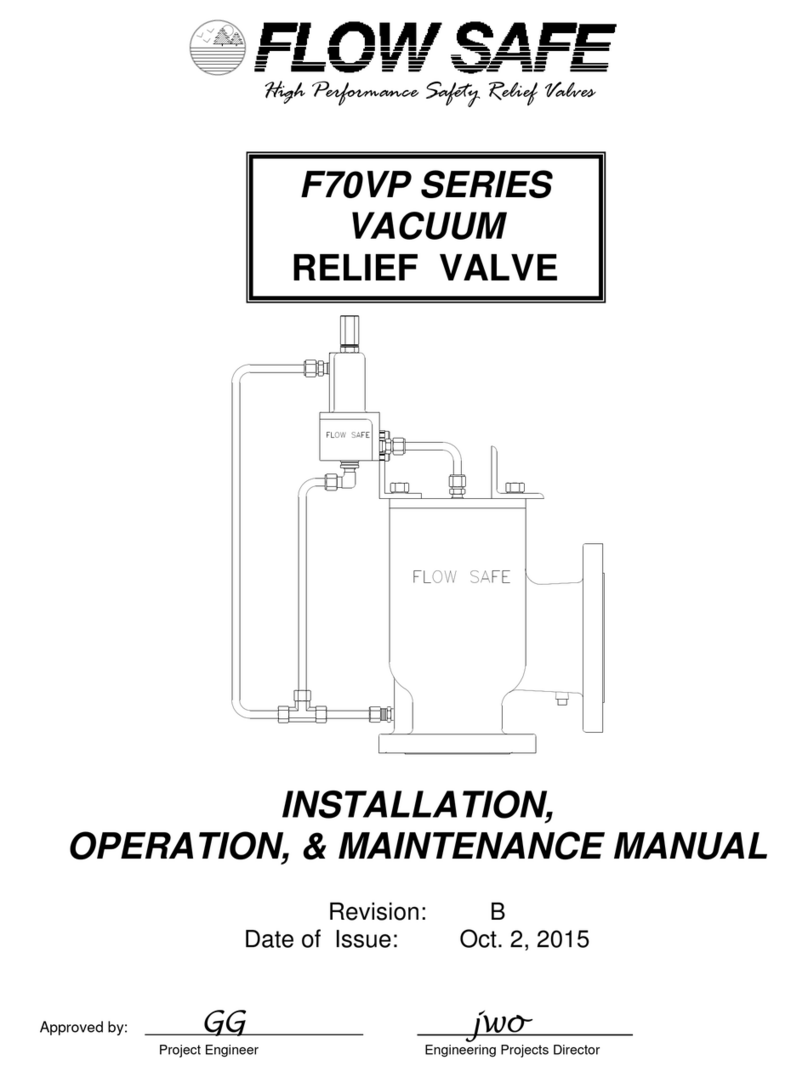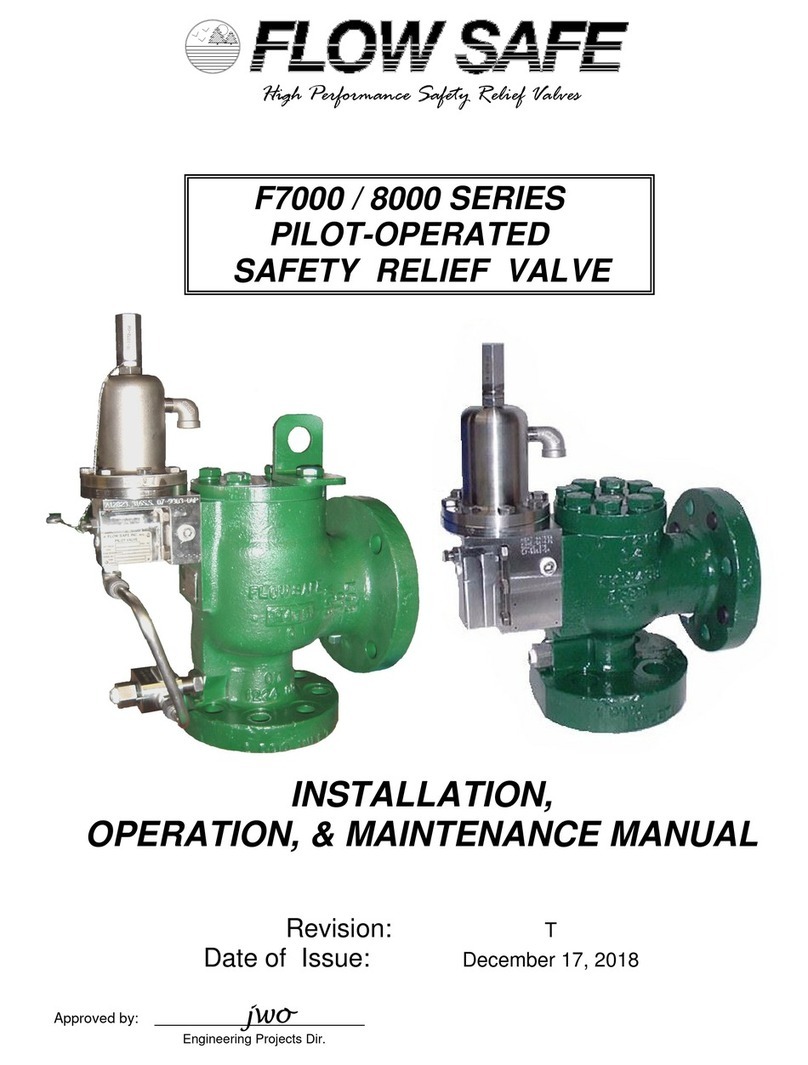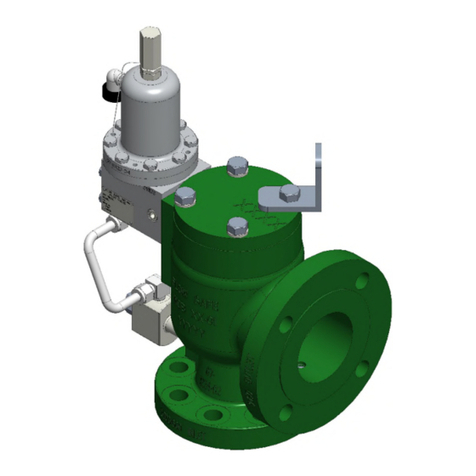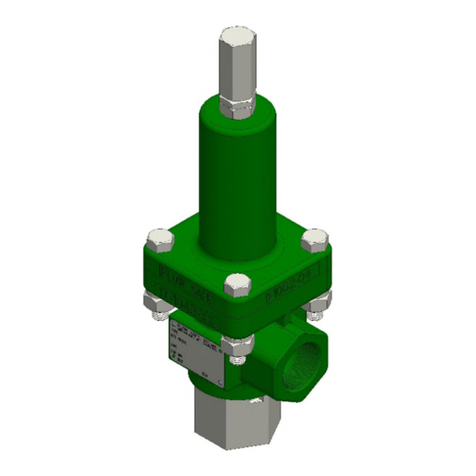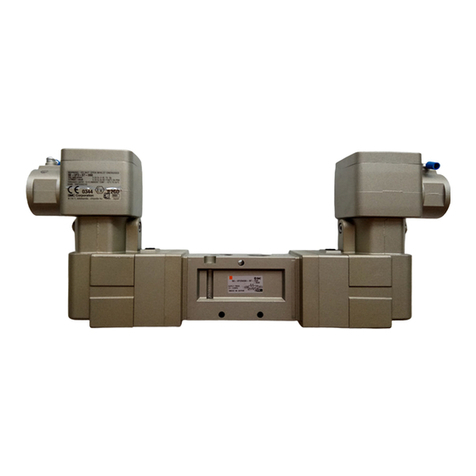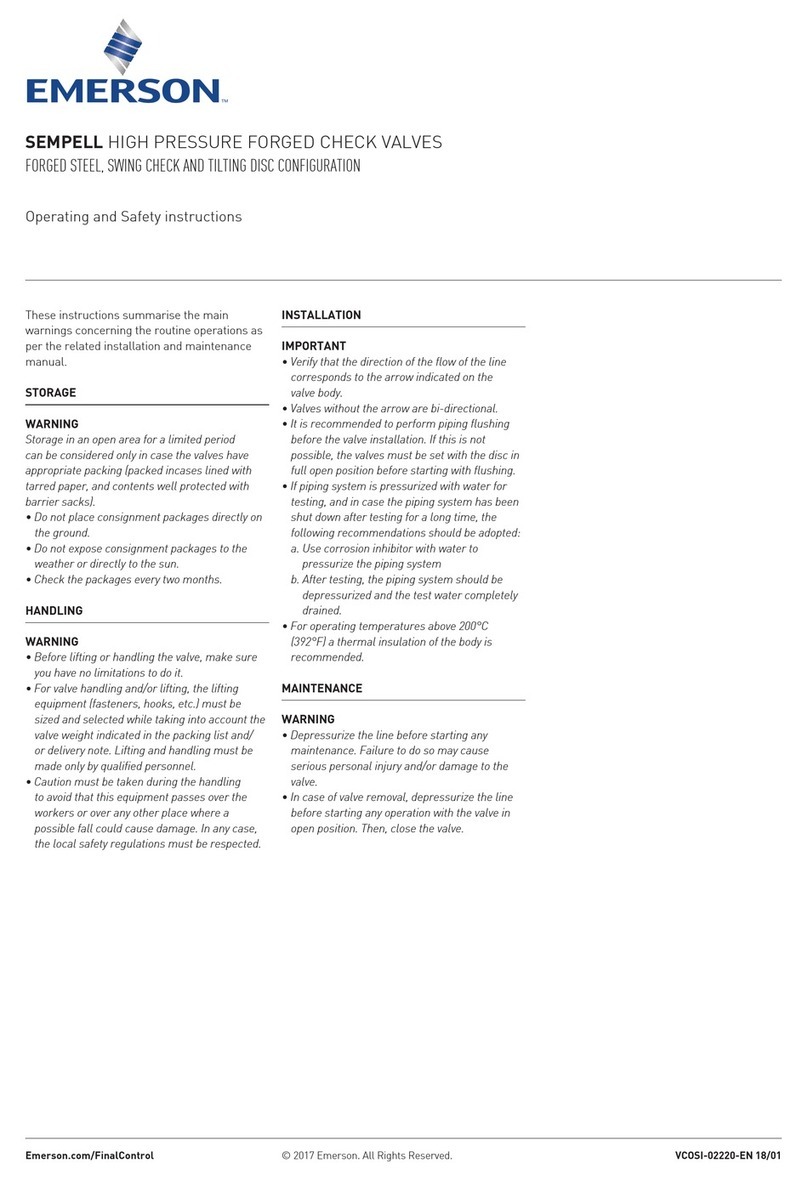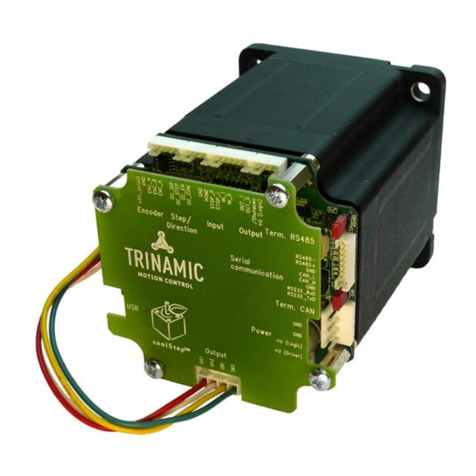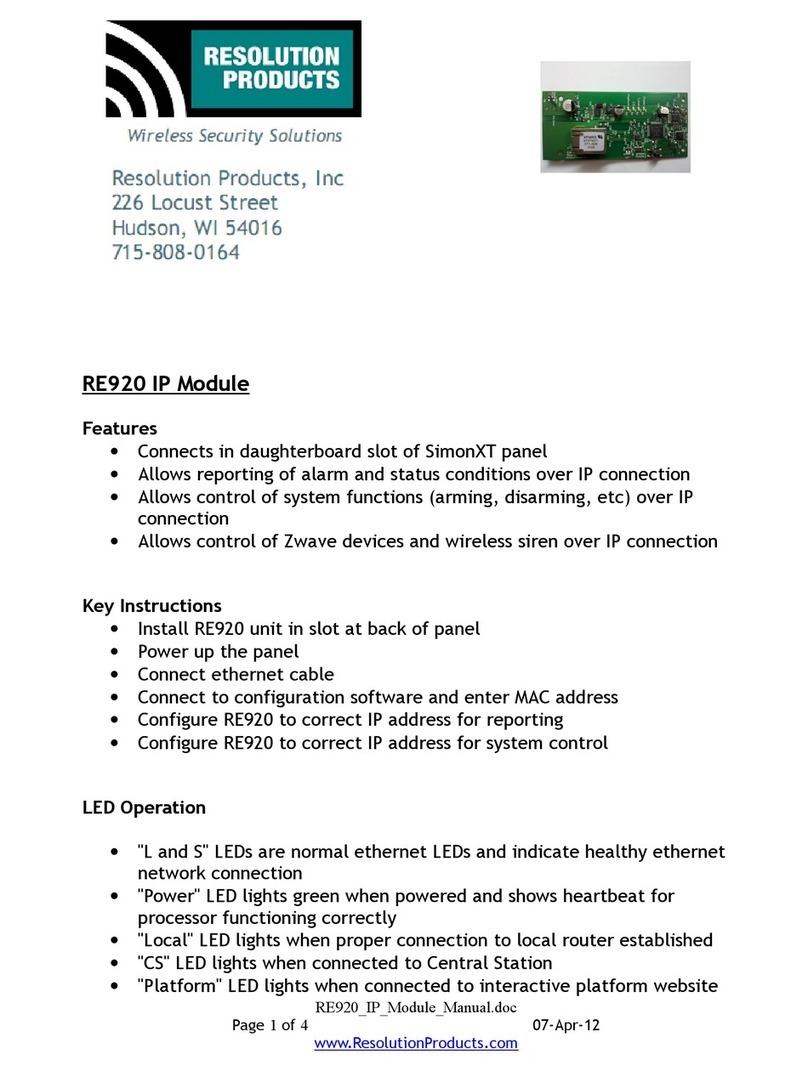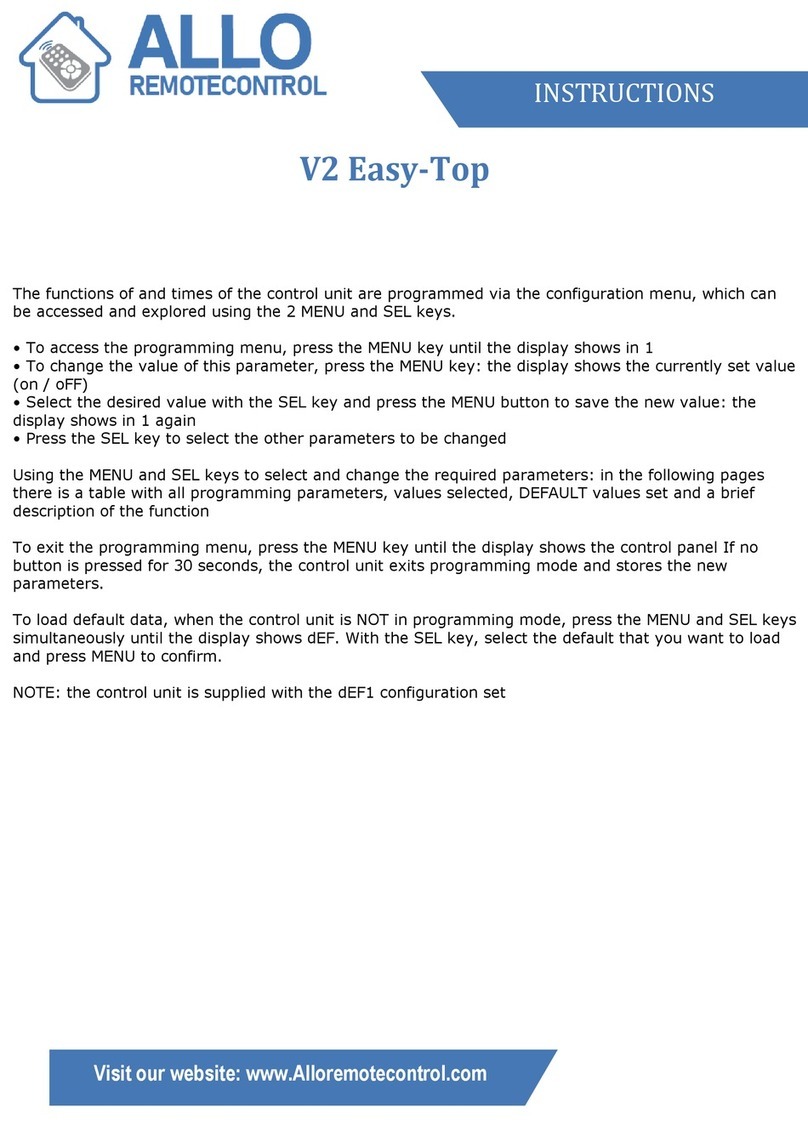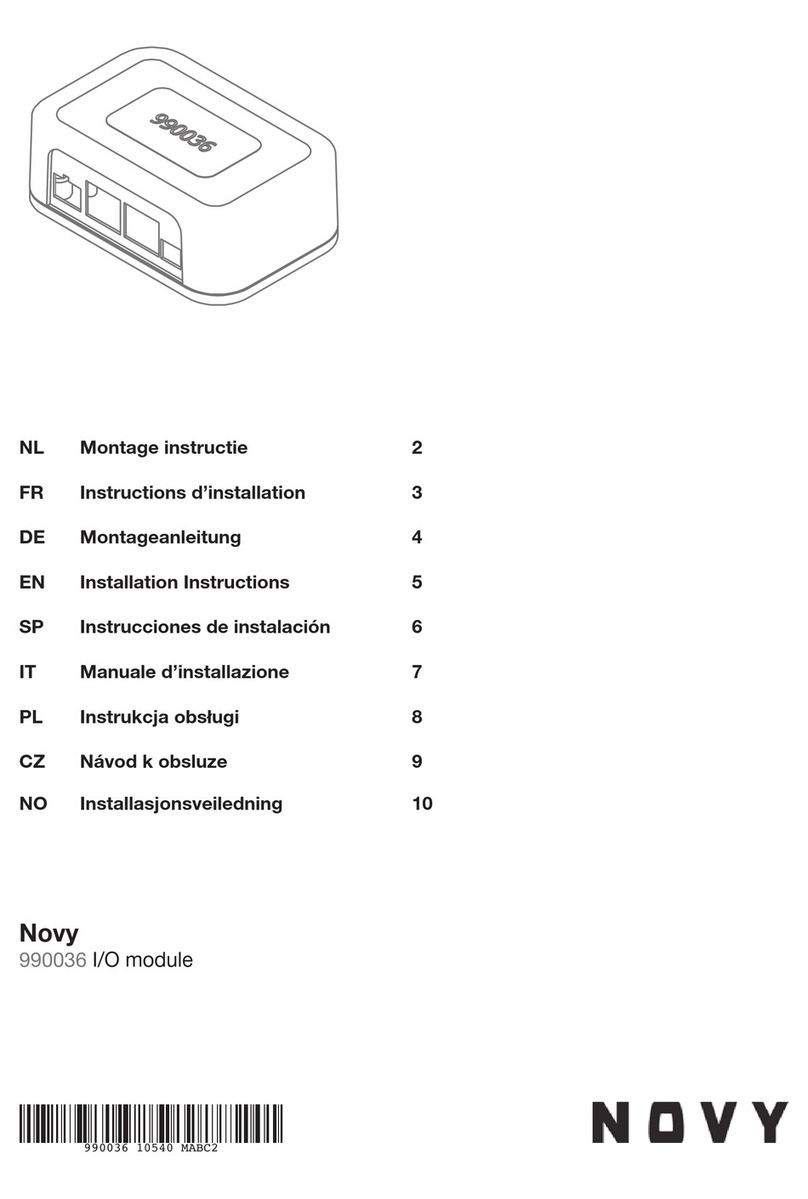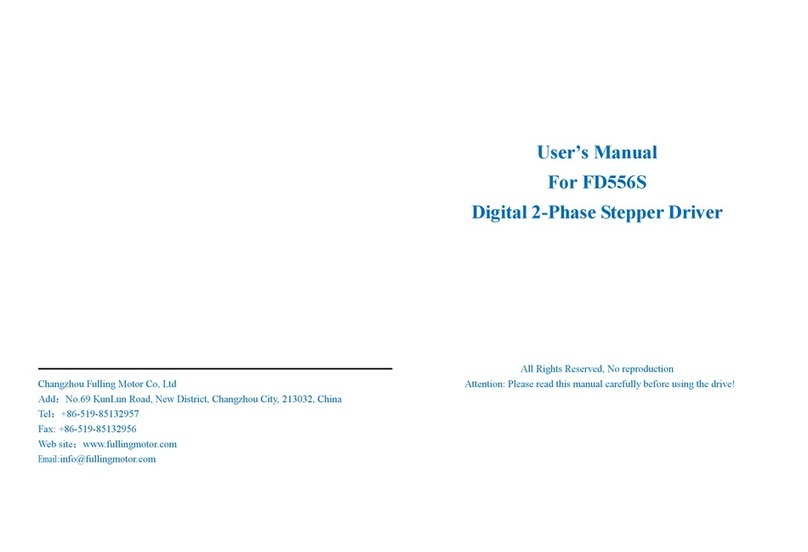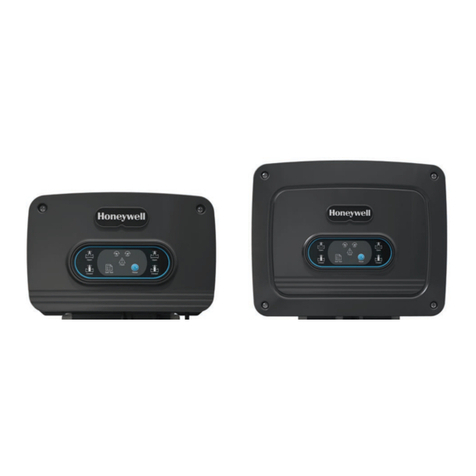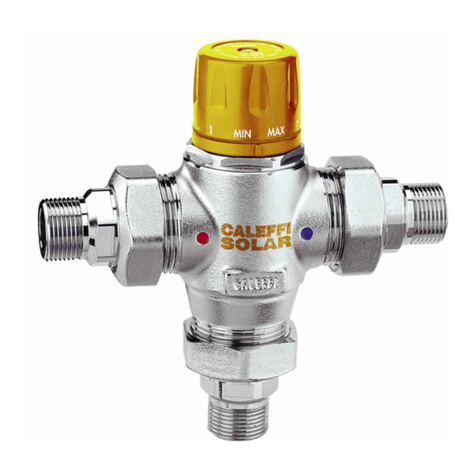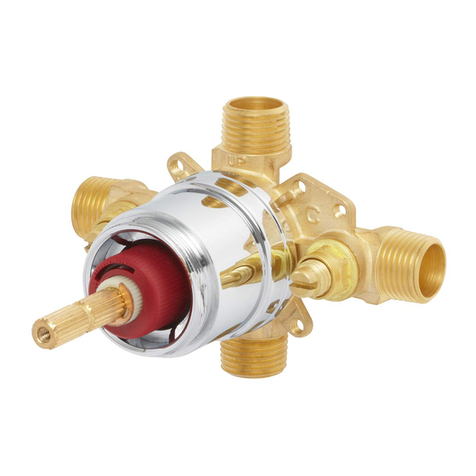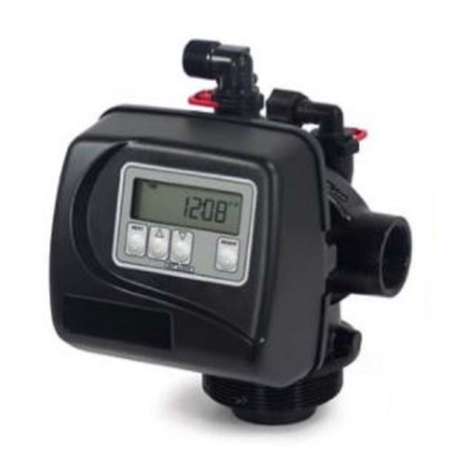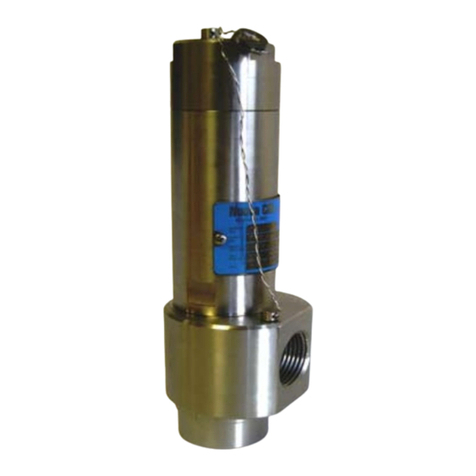INSTALLATION, OPERATION, &
MAINTENANCE MANUAL
TITLE: F84L Series Liquid Relief Valve Rev. H Page 7 of 15
3.0 VALVE MAINTENANCE
WARNING: It is extremely dangerous to attempt to disassemble any valve while it remains in
service with incoming line pressure. Also, improper assembly of the valve may
result in leakage or failure of the valve when returned to service.
3.1 DISASSEMBLY
(See Illustrations on Pages 13 through 15)
1) Remove the valve from service, or adequately and safely block the incoming pressure before
disassembling the valve and performing maintenance. NOTE: If bushing remains connected to
the system piping, then the valve's spindle will fall out of the body as it is removed.
2) Cut and remove the lockwire.
3) For valves with lift lever, first remove the lock nut and lift lever. Slowly unscrew the bushing,
holding shaft. Unscrew the lift lever housing.
4) Remove the pressure adjusting (PA) screw cap. Measure the height of the PA screw above the
body and record value. For valves with lift lever, measure the distance from the jam nut to top of
threaded lifting rod. Then remove jam nut and lift nut.
5) Loosen the PA screw lock nut. Loosen PA screw until the spring load is removed.
6) a.) Bolted-bonnet valves: Unscrew and remove the four bolts, nuts, and lockwashers between
the body and bonnet. Remove spring washer(s) and spring, and lifting rod subassembly (if
applicable). Remove the bonnet, including attached bonnet base if an older F84L-4 or –8 “large
body,” where these two pieces are joined by a retaining ring.
b.) F84L-2 Two-piece Micro body: Unscrew the bonnet from the body. Remove spring washers
and spring.
7) For the –G and –J orifices, make sure the four small pipe plugs are securely in place in the top of
the body.
8) Unscrew and remove the bushing, using wrench flats.
9) Remove the spindle assembly.
10) a.) For the bolted-bonnet valve sizes and -2 with retained seat, remove retainer screw, retainer,
and seat. Existing O-rings may be removed by carefully prying them out of the spindle grooves.
b.) For the F84L-2 with push-in seat, remove the seat by prying it out with a sharp-edged tool or
small screwdriver. It may first need to be drilled through the center using a 1/16”or 3/32” diameter
drill bit. To remove the two spindle seal O-rings, which are situated in small grooves in the body, a
sharp pointed metal tool must be used to carefully pry them out. Try not to gouge the surrounding
metal surfaces.
11) Replace the softgoods per the instructions in Section 3.2.
•Replacement parts may be found in the appropriate FLOW SAFE softgoods kit, as listed
in Section 5.0 of this manual.
3.2 REASSEMBLY
1) Reassembly of these valves is basically the reverse of the disassembly.
NOTE: Care must be taken in the handling of all items, particularly softgoods.
2) Inspect condition of nozzle seating surface and spindle guide surface inside body. Buff out or
polish any scratches that may interfere with a good seal, or replace part if necessary.
3) Apply Neverseez or DuPont Krytox (for oxygen service) to all straight threads.
4) Install the seat dry. For bolted-bonnet valves, insert the plastic seat, seat retainer, and retainer
screw into the spindle. Apply Loctite or Vibra-tite to retainer screw threads. As screw is tightened,
ensure that it meets firm resistance against the locking Heli-Coil in spindle. For the F84L-2 with
push-in seat, the radiused or chamfered edge of the seat must be facing out; push the seat
squarely into the spindle cavity using a clean finger or other soft surface. Do not nick or scratch the
sealing edge.















